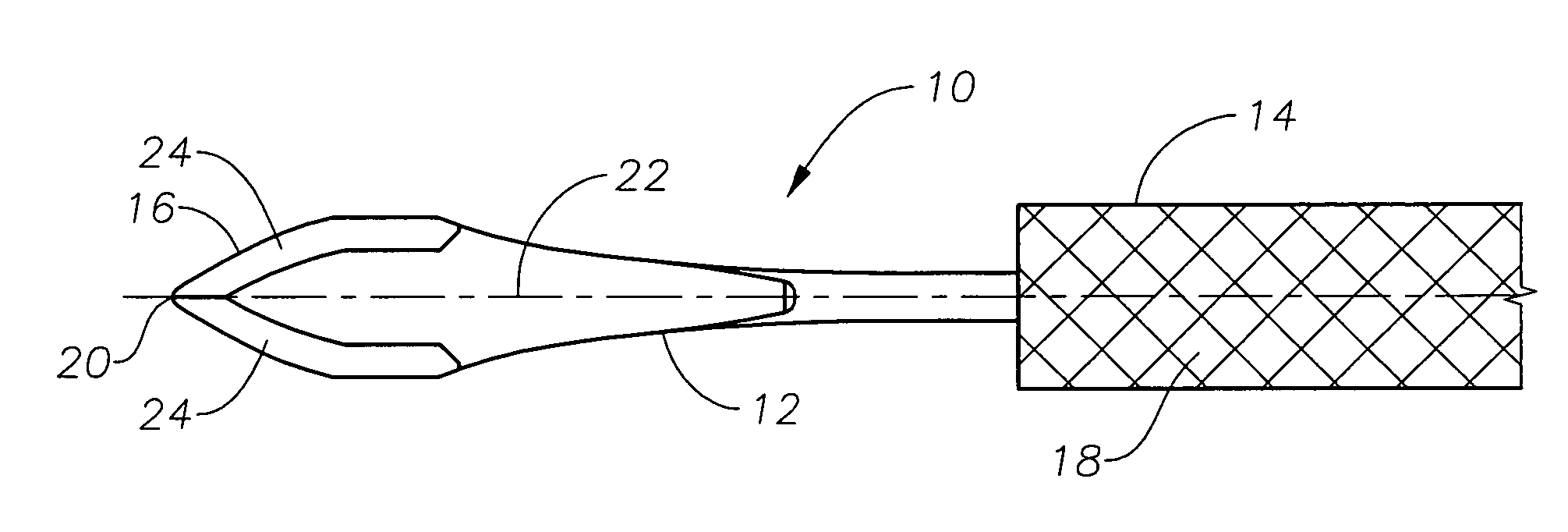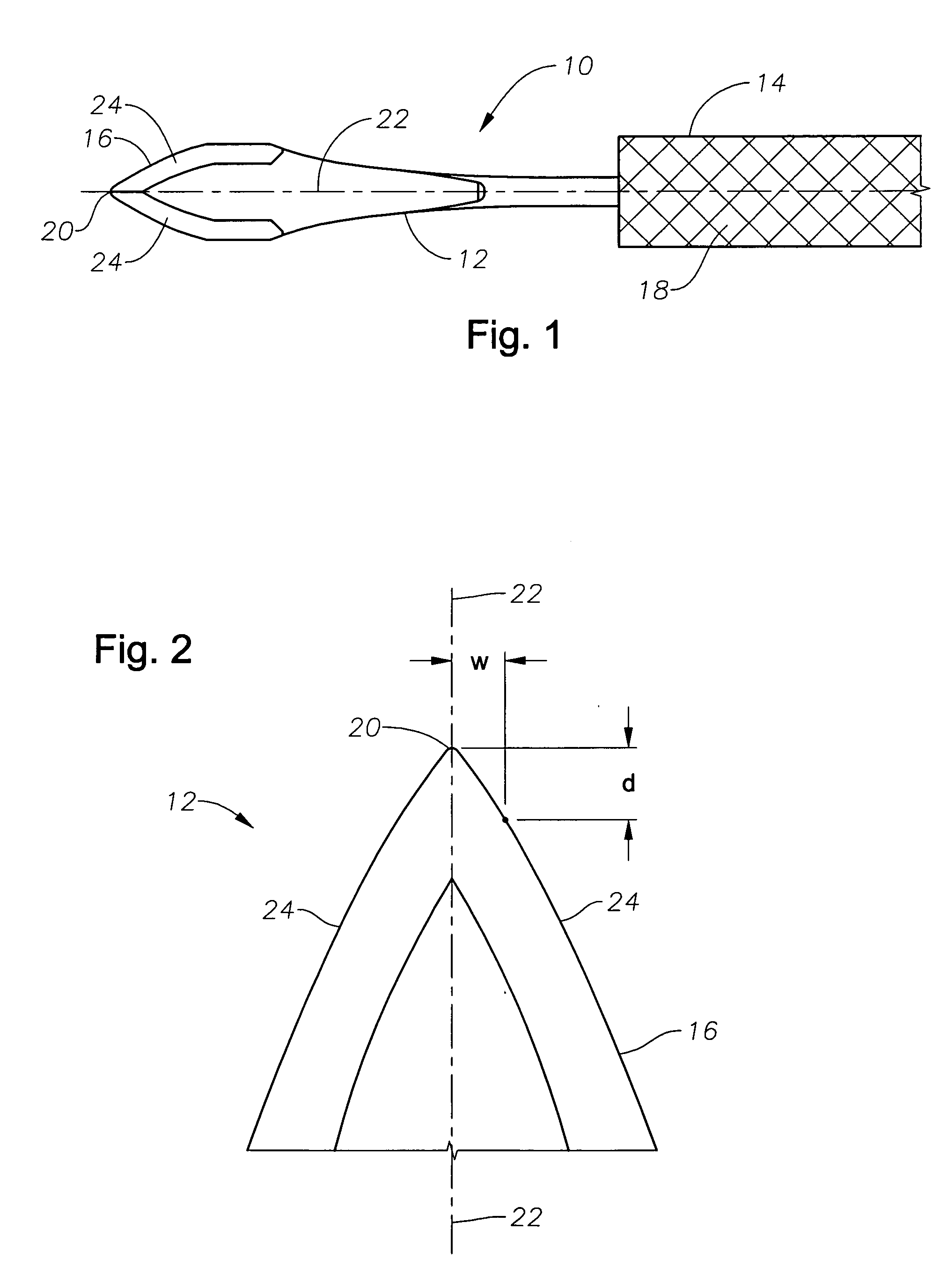Surgical knife
a surgical knife and blade technology, applied in the field of surgical knives, can solve the problems of the blade's ability to distribute force and the tip being vulnerable to bending, and achieve the effect of efficient distribution and reducing incisional for
- Summary
- Abstract
- Description
- Claims
- Application Information
AI Technical Summary
Benefits of technology
Problems solved by technology
Method used
Image
Examples
Embodiment Construction
[0012] As seen in FIG. 1, knife 10 of the present invention generally includes blade 12 and handle 14. Blade 12 may be any suitable surgical blade made, for example, from stainless steel, titanium, diamond or diamond-like coated substrate, such blades being well-known in the art, but is preferably made from grinding or coining wire stock stainless steel and sharpened by electropolishing techniques known in the art. Handle 14 preferably are made from injection-molded thermoplastic, but may also be made from other plastics, stainless-steel or titanium. Handle preferably contains ribs or knurling 18 to make handle 14 easier to grip. Blade 12 is attached to handle 14 by any suitable method, such as a press fit or adhesive.
[0013] As best seen in FIG. 2, blade 12 has a distal tip 16 having a distal point 20. Longitudinal centerline 22 extends longitudinally down the length of blade 12. Distal tip preferably has a thickness of approximately between 0.003 inches and 0.007 inches with an an...
PUM
| Property | Measurement | Unit |
|---|---|---|
| thickness | aaaaa | aaaaa |
| thickness | aaaaa | aaaaa |
| angle | aaaaa | aaaaa |
Abstract
Description
Claims
Application Information
 Login to View More
Login to View More - R&D
- Intellectual Property
- Life Sciences
- Materials
- Tech Scout
- Unparalleled Data Quality
- Higher Quality Content
- 60% Fewer Hallucinations
Browse by: Latest US Patents, China's latest patents, Technical Efficacy Thesaurus, Application Domain, Technology Topic, Popular Technical Reports.
© 2025 PatSnap. All rights reserved.Legal|Privacy policy|Modern Slavery Act Transparency Statement|Sitemap|About US| Contact US: help@patsnap.com


